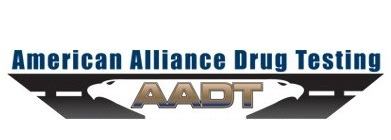More Drivers Drugged Than Drunk These Days
The OC Register
More California drivers tested positive for drugs – especially marijuana – than for alcohol during a first-of-its-kind roadside survey that safety officials say points to a serious and growing threat.
One in every seven drivers checked on four weekend nights this summer had illegal or prescription drugs in their system, which could make them dangerous behind the wheel, according to the survey released in December.
The study comes as the California Highway Patrol (CHP) prepared for a “maximum enforcement” campaign during the holiday season, in part to target people driving under the influence. The most recent statewide crash statistics, from 2010, show that more people die on the road during Thanksgiving than during any other major holiday but New Year’s.
The dangers of drunken driving have been on display in television commercials and school assemblies for years. But state officials describe drugged driving as an emerging problem that has often gone under-reported and under-recognized.
In an attempt to measure that problem, survey-takers managed by the state Office of Traffic Safety (OTS) waved over hundreds of late-night California motorists over two weekends this summer. They asked to conduct a short interview, record a puff of breath and – in exchange for $20 – take a saliva sample, all of it anonymous. More than 1,300 drivers took them up on the offer.
Tests later showed that 14 percent of those drivers had at least one drug in their system. Marijuana turned up in more than half those positive tests; the rest were split evenly between illegal drugs and prescription or over-the-counter medications that could impair driving. The marijuana tests looked only for an active ingredient called THC that dissipates within a few hours, not for other marijuana markers that can linger for weeks and would have skewed the results.
“These results reinforce our belief that driving after consuming potentially impairing drugs is a serious and growing problem,” said Christopher J. Murphy, the director of the state’s OTS.
About 7.3 percent of the drivers in the survey were found to have some measurable level of alcohol on their breath, most testing well below the legal blood-alcohol limit of .08 percent. Nearly a quarter of those with alcohol in their system also tested positive for at least one drug.
A few of the drivers arrived at the survey checkpoints too drunk to legally drive, including one driver who was too drunk even to answer the questions. They were held at the site until a sober driver could take over but were not arrested or cited, said Chris Cochran, a spokesman for the OTS.
The OTS commissioned the $650,000 study and contracted it to the Maryland-based Pacific Institute for Research and Evaluation. It was paid for with federal funds. Some within OTS initially questioned whether such a voluntary survey would accurately reflect the problem: Would a driver high on cocaine, for example, agree to stop and talk about it? But Cochran said the participation rate was so high, even among drivers who initially wanted no part of it, that the study’s authors determined it was statistically sound.
The survey-takers randomly stopped drivers at nine sites around California, including one in Anaheim. But Cochran said the survey did not break down numbers by city or county.
Local law enforcement professionals have seen the effects of drugged driving in the crashes they investigate. The conclusion is that the problem has only worsened in recent years, especially with prescription pain and anxiety medications. Yes, many of the same drugs that say on the bottom of the prescription bottle, will tell you “not to operate heavy machinery and not to drive.”
The California survey appears to be the first to attempt to measure drugged driving at the state level. It closely follows a national survey done in 2007 that found nearly identical rates of positive drug tests among nighttime drivers.
The state has been trying to put more focus on drugged driving, not just drunken driving. A new law better separates the two crimes when they get to court, which traffic-safety officials hope will make it easier to track drugged driving. The state also has given local prosecutor offices hundreds of thousands of dollars in grants to address drugged-driving cases.
“Drugged driving poses a serious threat to public safety,” Gil Kerlikowske, the director of National Drug Control Policy, said in a statement. “We look forward to working with California and other states to raise awareness about this important issue and continue to take action to make our roadways safer.”



